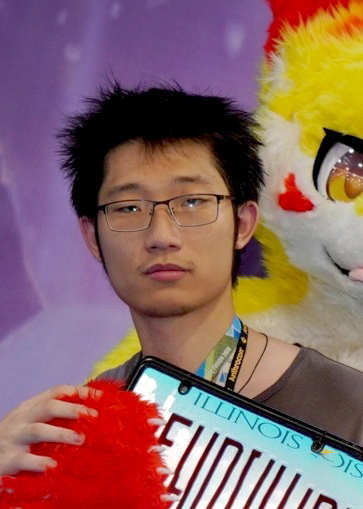USTC Astronomy Seminar Series: 2025 Spring
GalfitT: Multi-epoch Image Deconvolution and Light Curve Extraction
刘亦辰 博士
亚利桑那大学
2025/07/15, 4:00pm , the 19th-floor Observatory Hall

报告人:
Yichen Liu (刘亦辰) is a PhD student in Steward Observatory at the University of Arizona, working with Prof. Xiaohui Fan. He uses JWST NIRCam imaging to study the host galaxies of high-redshift quasars, aiming to understand the formation and evolution of massive galaxies and their central black holes in the early universe. In parallel, he leverages the grism spectroscopy mode of JWST NIRCam to map the internal kinematics of distant galaxies, extending measurements of galaxy rotation curves to the epoch of cosmic noon. Beyond his observational work, Yichen enjoys developing computational tools and algorithms for astronomical data analysis, including galaxy fitting codes. Before joining Steward Observatory, he spent 3 years at the University of Macau and earned his B.S. from the University of Illinois at Urbana-Champaign in 2024.摘要:
Time-domain analysis of astronomical data has led to many exciting discoveries in modern astronomy. With prior knowledge of the light profile differences between transients and their hosts, we can detect such variables and extract their light curves accurately. We present GalfitT, a new software tool designed to model galaxy light profiles and transient light curves simultaneously, using multiple-epoch images as input. GalfitT recovers the intrinsic image of a galaxy before point spread function (PSF) convolution, which features better pixel sampling and a much higher signal-to-noise ratio, making morphological measurements of galaxies less biased by the PSF. Our method has also been tested to be more stable than traditional image deconvolution methods. With the host galaxy image subtracted, transient sources within the galaxy can be easily detected using GalfitT. According to our mock image tests, the detection efficiency and light curve accuracy are robust, as efficient as traditional image differencing methods. Moreover, GalfitT does not require selecting specific reference images and is less affected by image artifacts. All these novel aspects of GalfitT have been tested on current Hyper Suprime-Cam (HSC) survey data and can also benefit from future Vera C. Rubin Observatory Legacy Survey of Space and Time (LSST) observations, providing a powerful tool for future galaxy and transient studies. 邮编:230026 ,
邮编:230026 ,  联系电话: 0551-63601861
联系电话: 0551-63601861 Email:
Email: